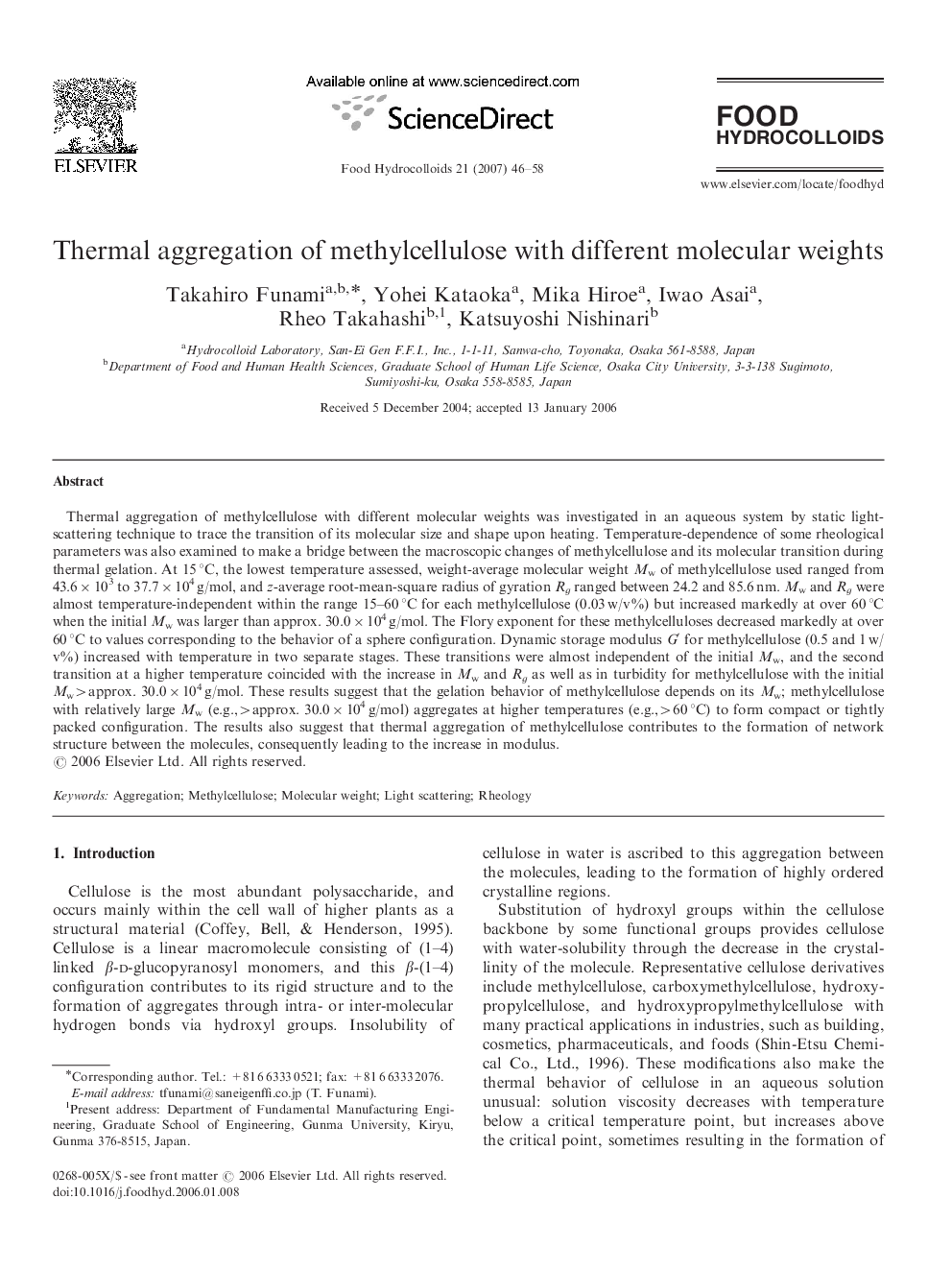| کد مقاله | کد نشریه | سال انتشار | مقاله انگلیسی | نسخه تمام متن |
|---|---|---|---|---|
| 605989 | 880380 | 2007 | 13 صفحه PDF | دانلود رایگان |

Thermal aggregation of methylcellulose with different molecular weights was investigated in an aqueous system by static light-scattering technique to trace the transition of its molecular size and shape upon heating. Temperature-dependence of some rheological parameters was also examined to make a bridge between the macroscopic changes of methylcellulose and its molecular transition during thermal gelation. At 15 °C, the lowest temperature assessed, weight-average molecular weight Mw of methylcellulose used ranged from 43.6×103 to 37.7×104 g/mol, and z-average root-mean-square radius of gyration Rg ranged between 24.2 and 85.6 nm. Mw and Rg were almost temperature-independent within the range 15–60 °C for each methylcellulose (0.03 w/v%) but increased markedly at over 60 °C when the initial Mw was larger than approx. 30.0×104 g/mol. The Flory exponent for these methylcelluloses decreased markedly at over 60 °C to values corresponding to the behavior of a sphere configuration. Dynamic storage modulus G′ for methylcellulose (0.5 and 1 w/v%) increased with temperature in two separate stages. These transitions were almost independent of the initial Mw, and the second transition at a higher temperature coincided with the increase in Mw and Rg as well as in turbidity for methylcellulose with the initial Mw>approx. 30.0×104 g/mol. These results suggest that the gelation behavior of methylcellulose depends on its Mw; methylcellulose with relatively large Mw (e.g.,>approx. 30.0×104 g/mol) aggregates at higher temperatures (e.g.,>60 °C) to form compact or tightly packed configuration. The results also suggest that thermal aggregation of methylcellulose contributes to the formation of network structure between the molecules, consequently leading to the increase in modulus.
Journal: Food Hydrocolloids - Volume 21, Issue 1, January 2007, Pages 46–58